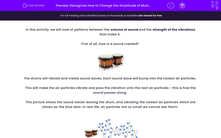In this activity, we will look at patterns between the volume of sound and the strength of the vibrations that make it.
First of all, how is a sound created?
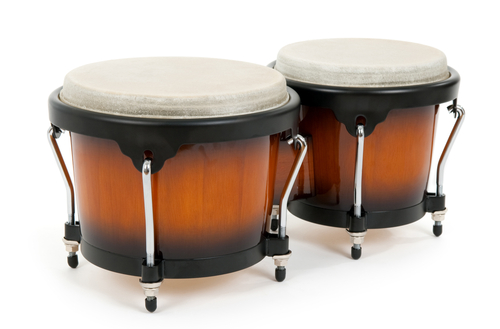
The drums will vibrate and create sound waves. Each sound wave will bump into the closest air particles.
This will make the air particles vibrate and pass the vibration onto the next air particles - this is how the sound passes along.
This picture shows the sound waves leaving the drum, and vibrating the closest air particles which are shown as the blue dots. In real life, air particles are so small we cannot see them!
.png)
The size of the vibration is called the amplitude.
The stronger the vibrations, the louder the sound or the bigger the amplitude.
A big amplitude has big sound waves.
The weaker the vibrations, the fainter the sound and the smaller the amplitude.
A small amplitude has small sound waves.

Wind instruments
A sound is made with a wind instrument by blowing down a pipe.

When we blow into a wind instrument, the air inside vibrates which is how the sound is made.
When we blow harder, more air will go inside the instrument. This means that more air particles will vibrate which will produce a bigger sound wave, so it will give a louder sound. This gives a big amplitude.
When we blow gently, less air will go inside the instrument. This means that fewer air particles will vibrate which will produce a smaller sound wave, so it will give a quieter sound. This gives a small amplitude.
Here are some wind instruments:
| Trumpet |  |
| Didgeridoo (from Australia) |  |
Percussion instruments
A sound is made in a percussion instrument by banging it.
When we bang, shake, or scrape a percussion instrument a part of it will vibrate. For example, the skin of a drum or the body of a cymbal will vibrate to make a sound.
To make the volume louder we would bang, shake, or scrape harder. The harder we bang a drum, the more the skin vibrates and the bigger sound wave created. This is a big amplitude.
To make the volume quieter we would bang, shake, or scrape gently. If we were scraping a guiro gently then it would create fewer vibrations, so it would create a smaller sound wave which is a lower volume. This is a small amplitude.
Here are some percussion instruments:
| Drum | 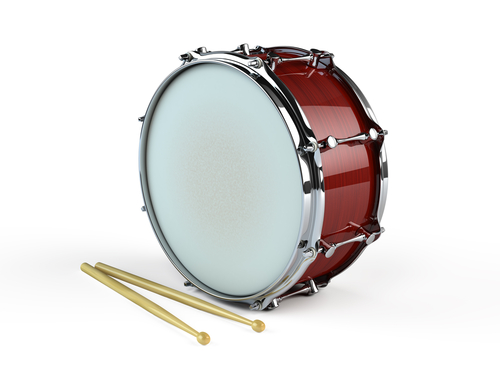 |
| Cymbals | 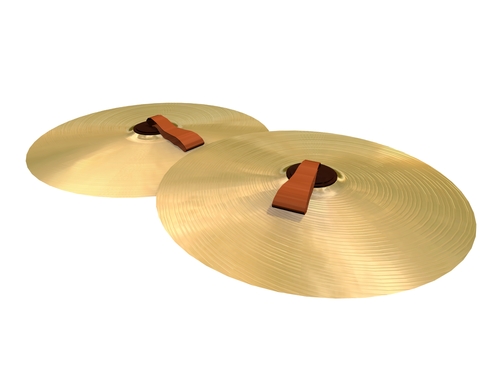 |
| Guiro (from the Caribbean) | 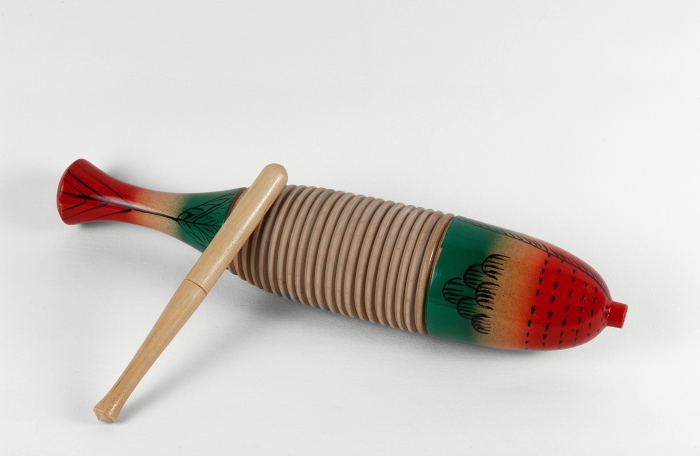 |
String instruments
A sound is made on a string instrument by plucking or twanging a string.
When we pluck the strings of a string instrument the vibration is passed into the air and you hear a sound.
How do you think we change the volume of a string instrument?
For a bigger amplitude, we need to pluck the string harder. This will cause more vibrations to pass into the air, creating a bigger sound wave.
For a smaller amplitude, we need to pluck the string gently. This will cause fewer vibrations to pass into the air.
Here are some stringed instruments.
| Violin |  |
| Sitar (from India) |  |
Are you ready to have a go at some questions?
.jpg)

